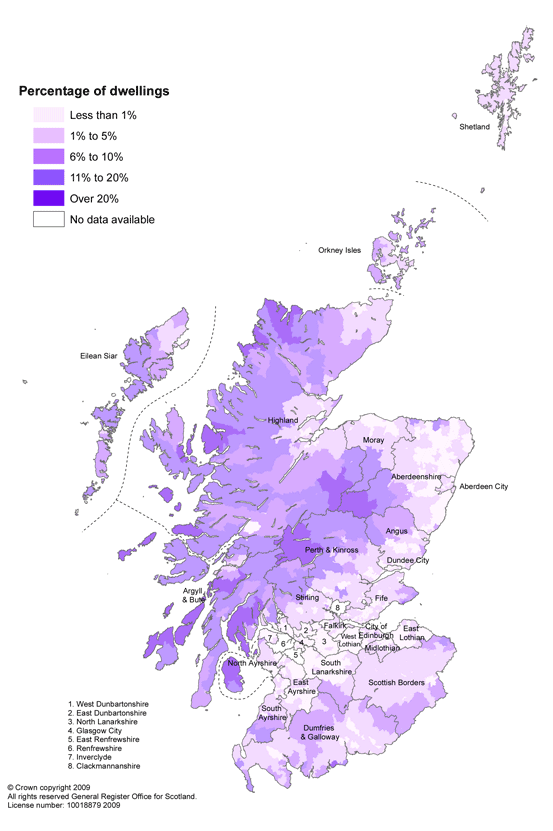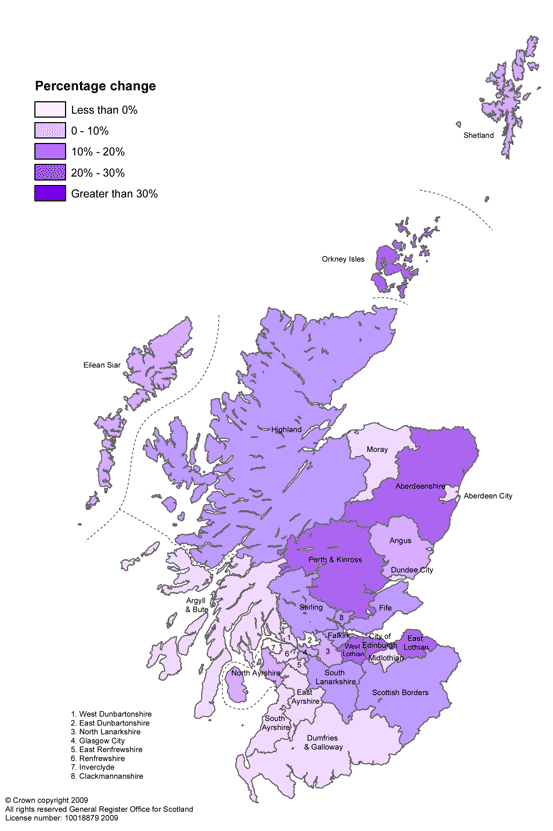
In mid-2008, there were 2.3 million households in Scotland – around 290,000 more than in 1991. The number of households in Scotland has been increasing steadily, by between 11,000 and 23,000 each year since 1991. The rate of growth has slowed in the past year; between 2007 and 2008, the increase in the number of households (17,500) was lower than in any other year for the last five years.
By 2031, the number of households in Scotland is projected to increase to 2.7 million, which is an average of 17,600 additional households per year. Most of the increase is the result of an ageing population and more people living alone or in smaller households, rather than an increase in the overall population. Looking to the future, there is a projected increase in the number of people in older age groups, with a fall in the number of younger people. This has an impact on household structure, as elderly people are more likely to live alone or with just one other person and children tend to live in larger households.
Variations within Scotland
Over the last five years, the number of households has increased in every local authority area in Scotland. These trends are predicted to continue, with the number of households in almost every local authority area projected to increase over the next 25 years. Figure 8.1 shows the projected percentage change in the number of households in each local authority area between 2006 and 2031.
In some areas, the number of households is projected to rise markedly. In 14 of the 32 local authority areas, the number of households is projected to increase by at least 20 per cent. The largest projected increases are in Orkney, West Lothian and Edinburgh (all 35 per cent). Perth and Kinross, Aberdeenshire and East Lothian also have projected increases over 30 per cent. In contrast, Inverclyde has a projected decrease of three per cent over the same period, and East Dunbartonshire has a projected decrease of two per cent.
Figure 8.1 Projected percentage change in households by local authority area, 2006 -2031

Household type
Figure 8.2 shows the numbers of households of each type in 1981 and 2006 and the projected number in 2031. There is a substantial increase in households containing just one adult (a projected increase of nearly a half over the next 25 years). There are also increases in households with two adults (a projected increase of around a quarter), and households with one adult with children.
In contrast, the number of larger households is falling, with households containing two or more adults with children, or three or more adults, projected to decrease by almost a third over the next 25 years.
Figure 8. 2 Households in Scotland by household type: 1981, 2006 and 2031
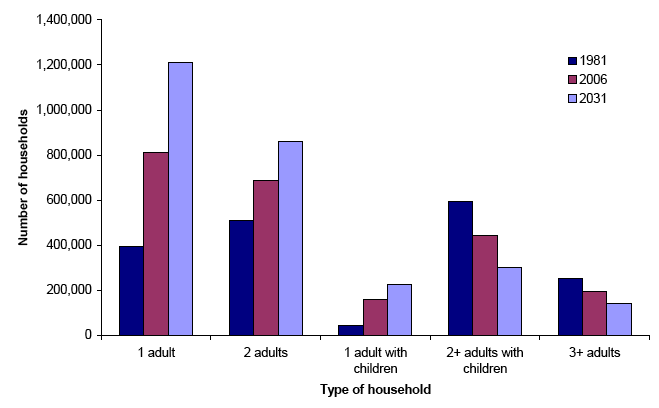
Age group
Figure 8.3 shows the number of households in 1981 and 2006 and the projected number in 2031, by the age of the head of household. The ‘head of household’ is normally the first person included on the Census form.
Scotland’s population is ageing, with a projected increase in the number of people in the older age groups. This trend is reflected in the projected number of households, with the largest increases shown in households headed by people aged 60 or over (an increase of over 50 per cent, from 753,000 to 1,140,000, between 2006 and 2031). In contrast, households headed by someone aged under 60 are projected to increase by just four per cent, to around 1,590,000. The number of households headed by someone aged 85 or over is projected to more than double over the same period, from 69,000 to 177,000.
Figure 8.3 Households in Scotland by age of head of household: 1981, 2006 and 2031
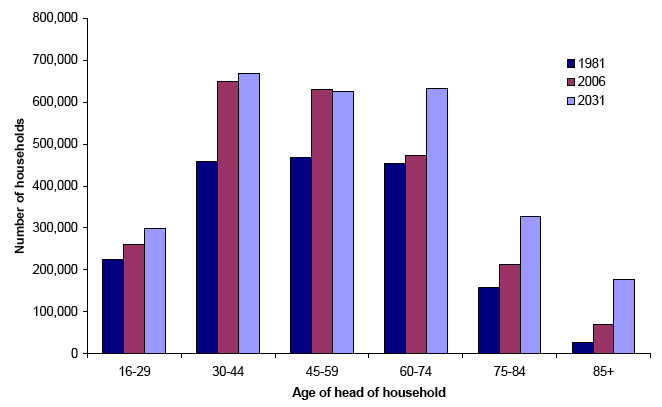
One-adult households
Thirty-eight per cent of dwellings in Scotland are entitled to a Council Tax discount because there is only one adult living there (alone or with children). There are more one-adult households in urban areas (42 per cent in large urban areas, compared to 29 per cent in remote rural areas) and in deprived areas (52 per cent in the most deprived areas, compared to 28 per cent in the least deprived areas), as illustrated in Figures 8.4 and 8.5.
Figure 8.4 One-adult households, by urban-rural classification, 2008
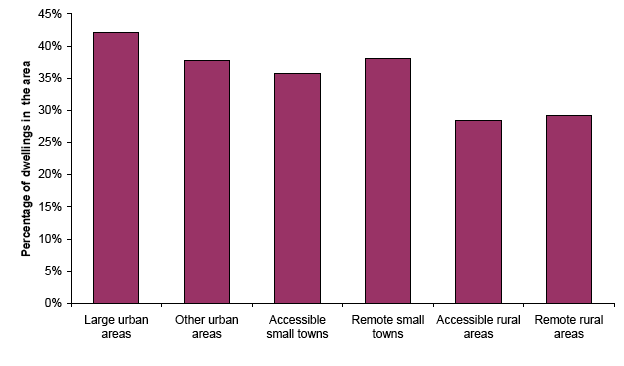
Dwellings entitled to a Council Tax discount, as there is only one adult living there (either alone or with children).
Figure 8.5 One-adult households, by level of deprivation, 2008
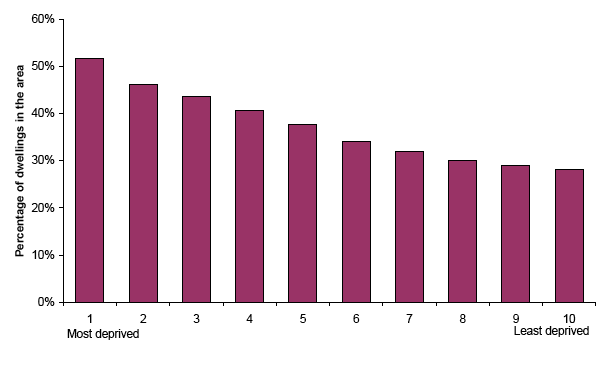
Dwellings entitled to a Council Tax discount, as there is only one adult living there (either alone or with children).
Type of housing
There are higher proportions of flats in urban areas, and in more deprived areas, as shown in Figures 8.6 and 8.7. In contrast, there are higher proportions of detached houses in rural areas, and in less deprived areas.
Figure 8.6 Dwelling type, by urban-rural classification, 2008
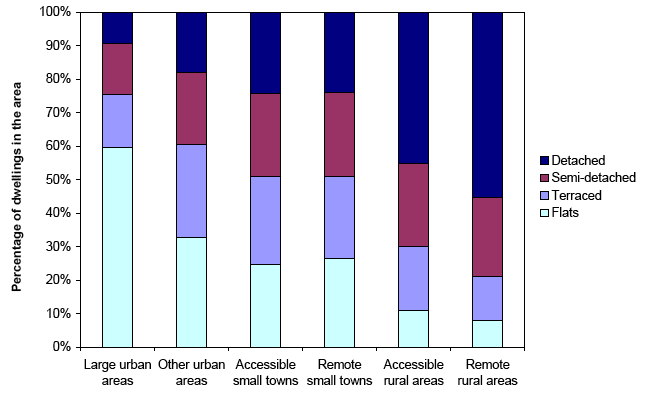
Figure 8.7 Dwelling type, by level of deprivation, 2008
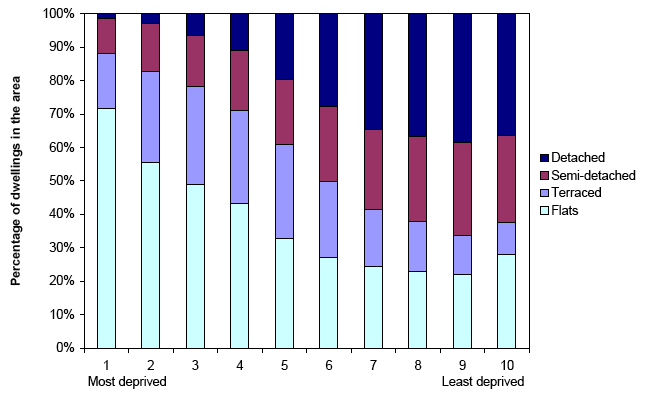
Vacant dwellings and second homes
Across Scotland as a whole, 2.8 per cent of dwellings are vacant and 1.4 per cent are second homes, though there is wide variation across the country. The percentage of dwellings which are vacant or second homes has stayed fairly constant over the last ten years, at around four per cent of all dwellings.
Remote rural areas have the lowest percentage of dwellings which are occupied (88 per cent), with higher percentages of vacant dwellings (four per cent of all dwellings in these areas) and second homes (seven per cent), as shown in Figure 8.8. The most deprived areas have the highest percentage of dwellings which are vacant (six per cent), as shown in Figure 8.9. The local authority areas with the highest percentage of dwellings which are vacant are Dundee City, Inverclyde, and the island authorities.
Figure 8.8 Vacant dwellings and second homes, by urban-rural classification, 2008
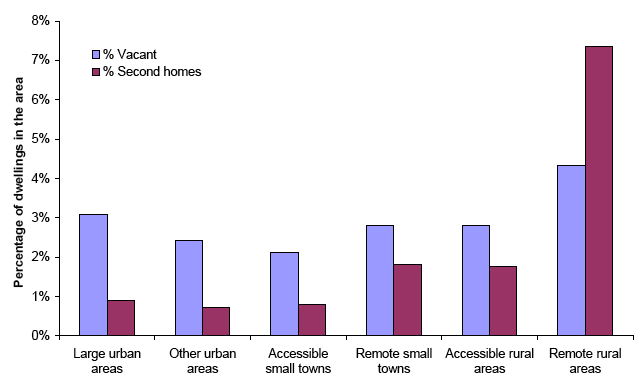
Figure 8.9 Vacant dwellings and second homes, by level of deprivation, 2008
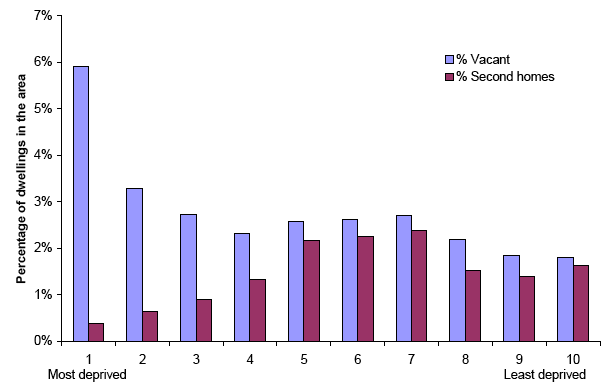
Figure 8.10 shows the percentage of dwellings which are second homes in each ‘data zone’ in Scotland. A data zone is a standard geography containing an average of around 750 people. Certain remote rural areas have the highest proportions of second homes, particularly parts of the west coast and some of the islands, Highland Perthshire, and the area around the Cairngorms National Park. This also illustrates the variation within local authority areas. For example, an average of eight per cent of dwellings in Argyll and Bute are second homes, but in five per cent of data zones at least one in every four dwellings is a second home.
Figure 8.10 Percentage of dwellings which are second homes, in each data zone in Scotland, 2008
